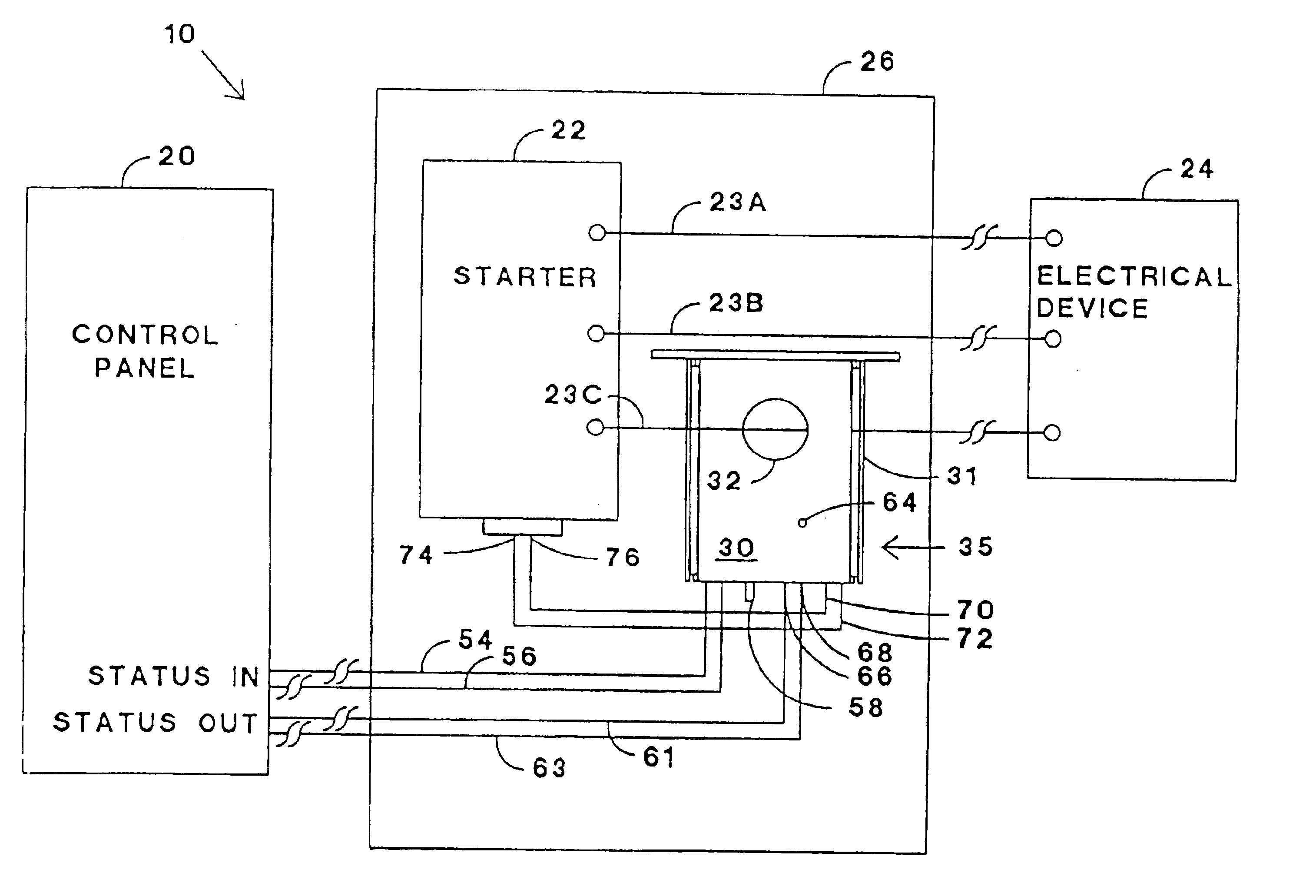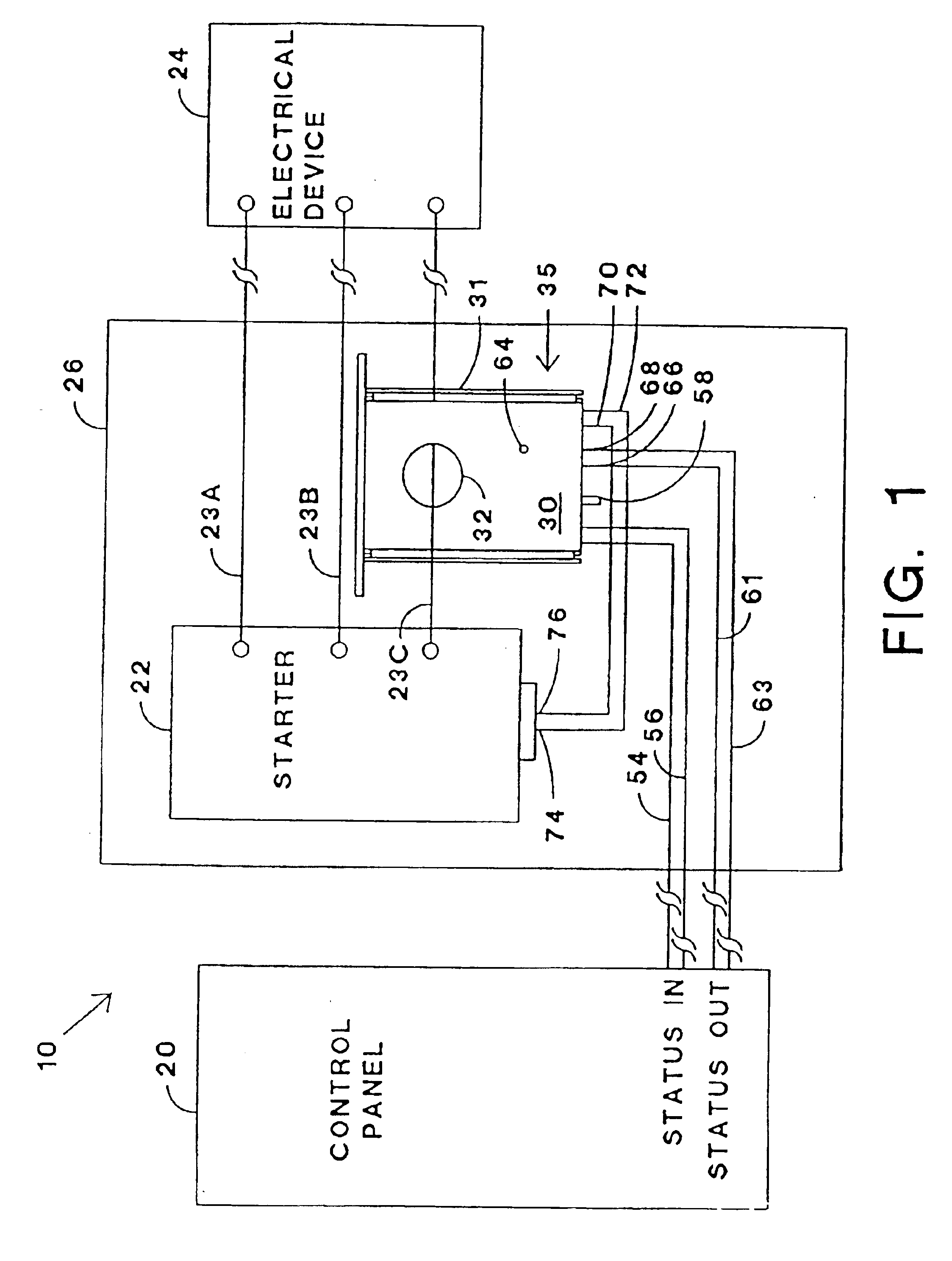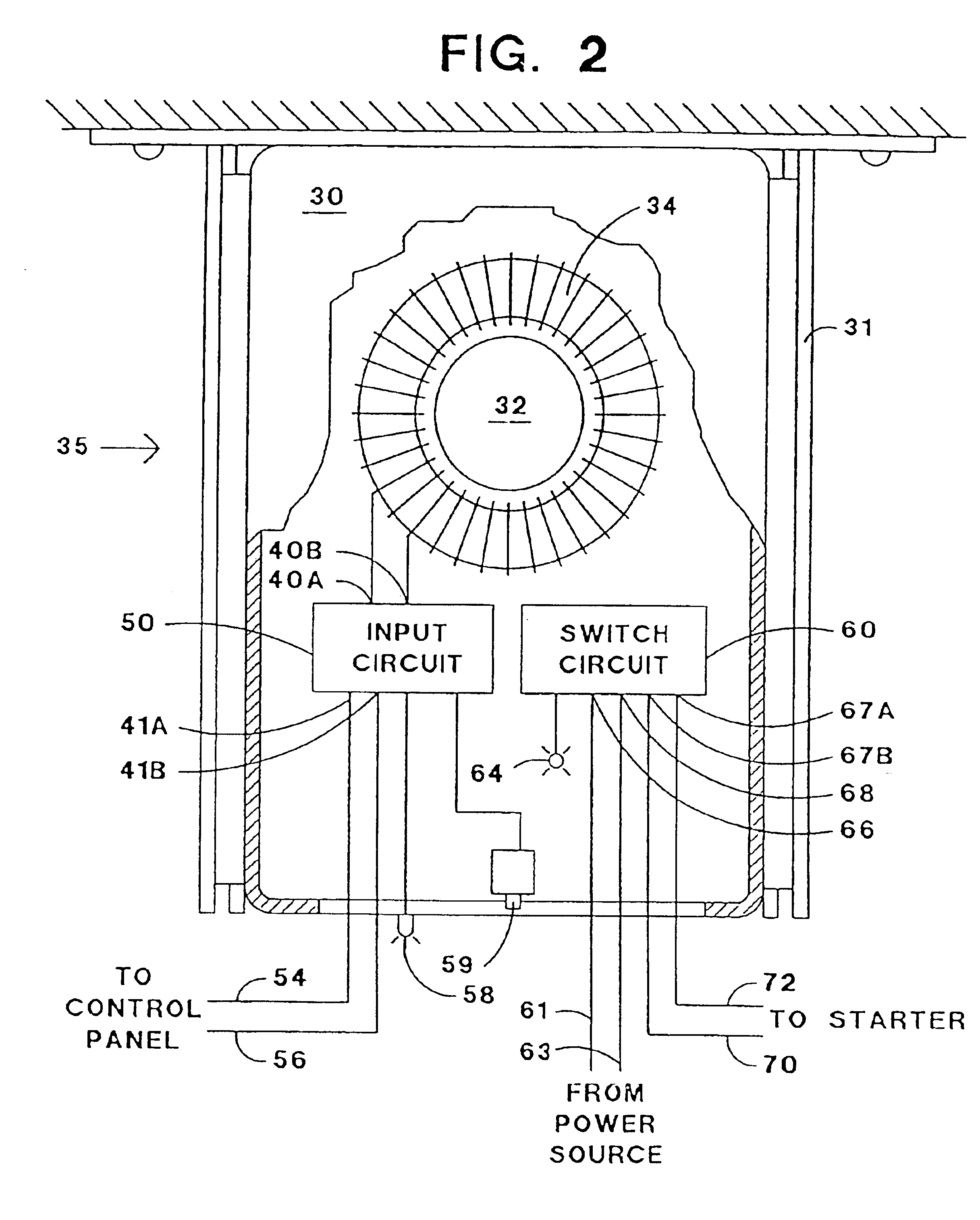Combination current sensor and relay
a current sensor and relay technology, applied in circuit-breaking switches, instruments, printers, etc., can solve the problems of affecting the entire system, unsuitable addition to existing power systems to detect fault conditions within power cables, and costly installation of sensors and controls, so as to reduce the time required to install both the switch circuit and the sensor circuit, reduce the number of backup parts and troubleshooting time, and reduce the effect of time-consuming
- Summary
- Abstract
- Description
- Claims
- Application Information
AI Technical Summary
Benefits of technology
Problems solved by technology
Method used
Image
Examples
Embodiment Construction
[0024]Referring to FIG. 1, an electrical system 10 includes a control panel 20 that utilizes a digital computer to provide effective control of many associated electrical devices. The centralized control panel 20 determines the effects on the entire system 10, or a portion of the system 10, of enabling or disabling an electrical device. For example, such associated electrical devices may include motors, pumps, fans, valves, generators, switches, lights, etc. One type of control panel 20 is generally known as a programmable logic controller, such as those sold by Allen Bradley.
[0025]A starter 22, designed to start (energize) and stop (de-energize) remotely located electrical devices, is electrically connected to an associated electrical device 24 by three power cables 23a, 23b, and 23c. Each starter 22 is usually located within an individual starter housing 26 which is a part of a substation. Most substations are not large, so it is desirable to reduce the size of the housing 26, so ...
PUM
| Property | Measurement | Unit |
|---|---|---|
| voltage | aaaaa | aaaaa |
| thickness | aaaaa | aaaaa |
| thickness | aaaaa | aaaaa |
Abstract
Description
Claims
Application Information
 Login to View More
Login to View More - R&D
- Intellectual Property
- Life Sciences
- Materials
- Tech Scout
- Unparalleled Data Quality
- Higher Quality Content
- 60% Fewer Hallucinations
Browse by: Latest US Patents, China's latest patents, Technical Efficacy Thesaurus, Application Domain, Technology Topic, Popular Technical Reports.
© 2025 PatSnap. All rights reserved.Legal|Privacy policy|Modern Slavery Act Transparency Statement|Sitemap|About US| Contact US: help@patsnap.com



